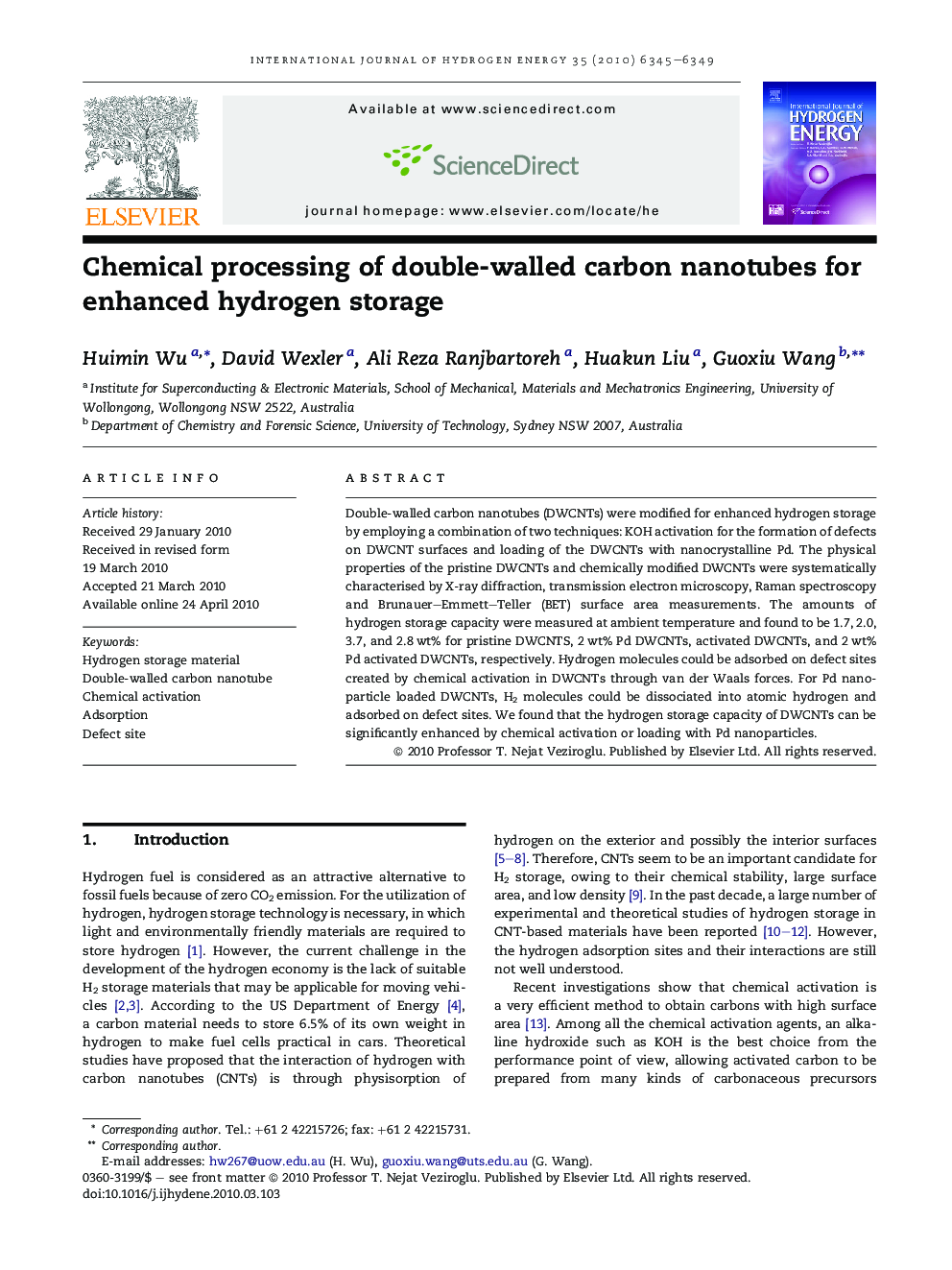| Article ID | Journal | Published Year | Pages | File Type |
|---|---|---|---|---|
| 1277096 | International Journal of Hydrogen Energy | 2010 | 5 Pages |
Double-walled carbon nanotubes (DWCNTs) were modified for enhanced hydrogen storage by employing a combination of two techniques: KOH activation for the formation of defects on DWCNT surfaces and loading of the DWCNTs with nanocrystalline Pd. The physical properties of the pristine DWCNTs and chemically modified DWCNTs were systematically characterised by X-ray diffraction, transmission electron microscopy, Raman spectroscopy and Brunauer–Emmett–Teller (BET) surface area measurements. The amounts of hydrogen storage capacity were measured at ambient temperature and found to be 1.7, 2.0, 3.7, and 2.8 wt% for pristine DWCNTS, 2 wt% Pd DWCNTs, activated DWCNTs, and 2 wt% Pd activated DWCNTs, respectively. Hydrogen molecules could be adsorbed on defect sites created by chemical activation in DWCNTs through van der Waals forces. For Pd nanoparticle loaded DWCNTs, H2 molecules could be dissociated into atomic hydrogen and adsorbed on defect sites. We found that the hydrogen storage capacity of DWCNTs can be significantly enhanced by chemical activation or loading with Pd nanoparticles.
